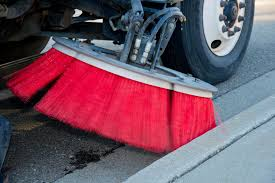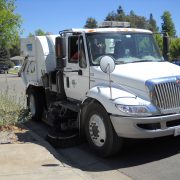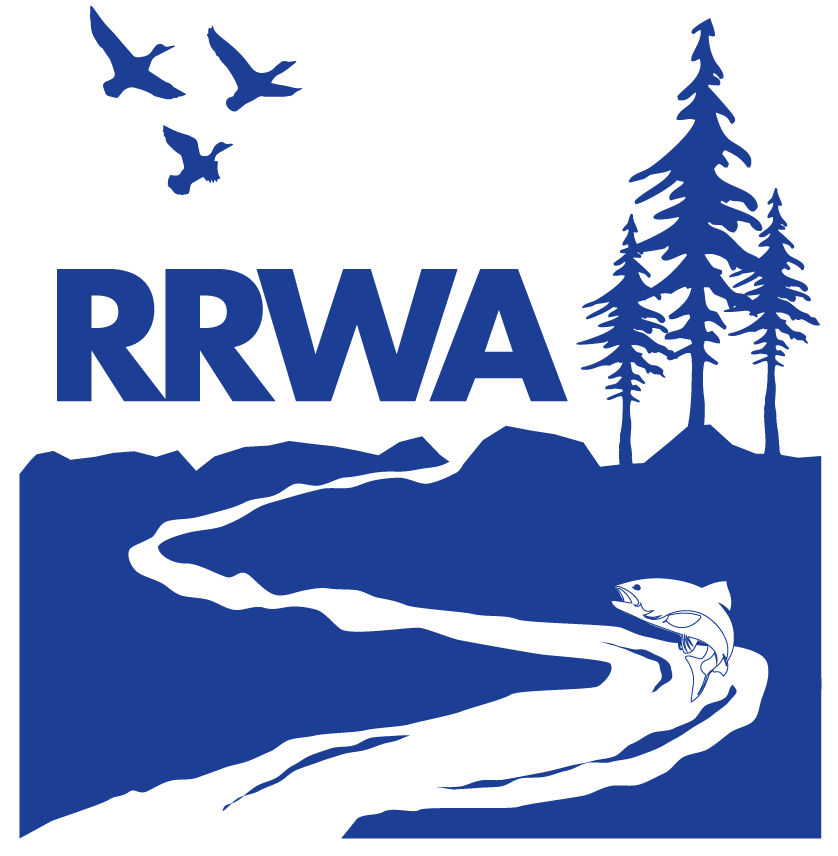Fun Facts: Street Sweepers
Have you ever awoken to a noisy sound on your street early in the morning and wondered what it was? If it was not your friendly Solid Waste truck collecting your garbage, it was probably your City’s Street Sweeper. Have you ever wondered why so many resources are spent to keep your streets clean, how they operate and why do they have to operate so early in the morning? Well if you have, here are a few answers.
 A street sweeper’s main purpose is to prevent unwanted debris from entering the storm drain system and ultimately entering our streams, creeks and finally the Russian River. The street sweeper collects thousands, yes thousands of tons of loose material from our streets and gutters every year. This includes items that should be placed in a trash can, enormous amounts of leaves, rocks and dirt, nails and screws, oil from vehicles, tiny particles from brake pads, debris from auto accidents and lastly a lot of worn out asphalt. Without a street sweeper, this unwanted material will find its way into the storm drain system once the rainy season arrives which ultimately ends up in the receiving stream, creek and the Russian River. A tremendous amount of debris is kept out of our waterways by street sweepers.
A street sweeper’s main purpose is to prevent unwanted debris from entering the storm drain system and ultimately entering our streams, creeks and finally the Russian River. The street sweeper collects thousands, yes thousands of tons of loose material from our streets and gutters every year. This includes items that should be placed in a trash can, enormous amounts of leaves, rocks and dirt, nails and screws, oil from vehicles, tiny particles from brake pads, debris from auto accidents and lastly a lot of worn out asphalt. Without a street sweeper, this unwanted material will find its way into the storm drain system once the rainy season arrives which ultimately ends up in the receiving stream, creek and the Russian River. A tremendous amount of debris is kept out of our waterways by street sweepers.
A street sweeper essentially operates like a giant vacuum cleaner. Engines power the brooms which rotate while pulling debris from the gutter and street for easy removal by the vacuum unit. Another engine powers the giant vacuum which pulls all of the loose debris from its travel way. As the sweeping and vacuuming process takes place, water is applied to minimize the amount of dust created by the machine.
Street sweepers start their day early so they can maximize the amount of debris that can be collected. At this time of day, a majority of businesses are not open and the parking spaces for the patrons are unoccupied. This allows the street sweeper to clean the entire width of the street and not just the lanes where vehicles travel.
As a citizen and good neighbor, it is important for all of us to do our part to make the Street Sweeper’s job as easy as possible. You can help by moving your vehicle from the street before street sweeping day. Your local Department of Public Works or waste hauler can provide the schedule for street sweeping in your neighborhood. Also, please do not place leaves, lawn cuttings or other debris into the gutter or onto the street. Too much debris, especially when leaves drop in the fall, can plug the giant vacuum. This requires the operator to stop and spend an excessive amount of time in order to unplug the sweeper.
In most areas within the Russian River Watershed, ordinances prohibit depositing debris on the sidewalk, in the gutter, or on the street. Please use your green bin for all leaves and yard waste. You can also contact your local Solid Waste Hauler to see if they have certain weeks in the fall for leaves to be picked up. Most of the Leaf Collection events allow for a certain number of additional cans or bags of leaves to be left at your curb for collection. If you observe broken glass or other debris on the street, please notify your Public Works Department. If you are driving, use caution when passing a street sweeper on its route, and be prepared for them to make U-Turns in order to maximize their efficiency.
Always try remembering the street sweeper and its operator are our friends, even early in the morning. When you see your local Street Sweeper, feel free to wave and thank them for doing their part to keep our streets clean in order to prevent unwanted debris from entering our creeks, streams, and ultimately the Russian River.




